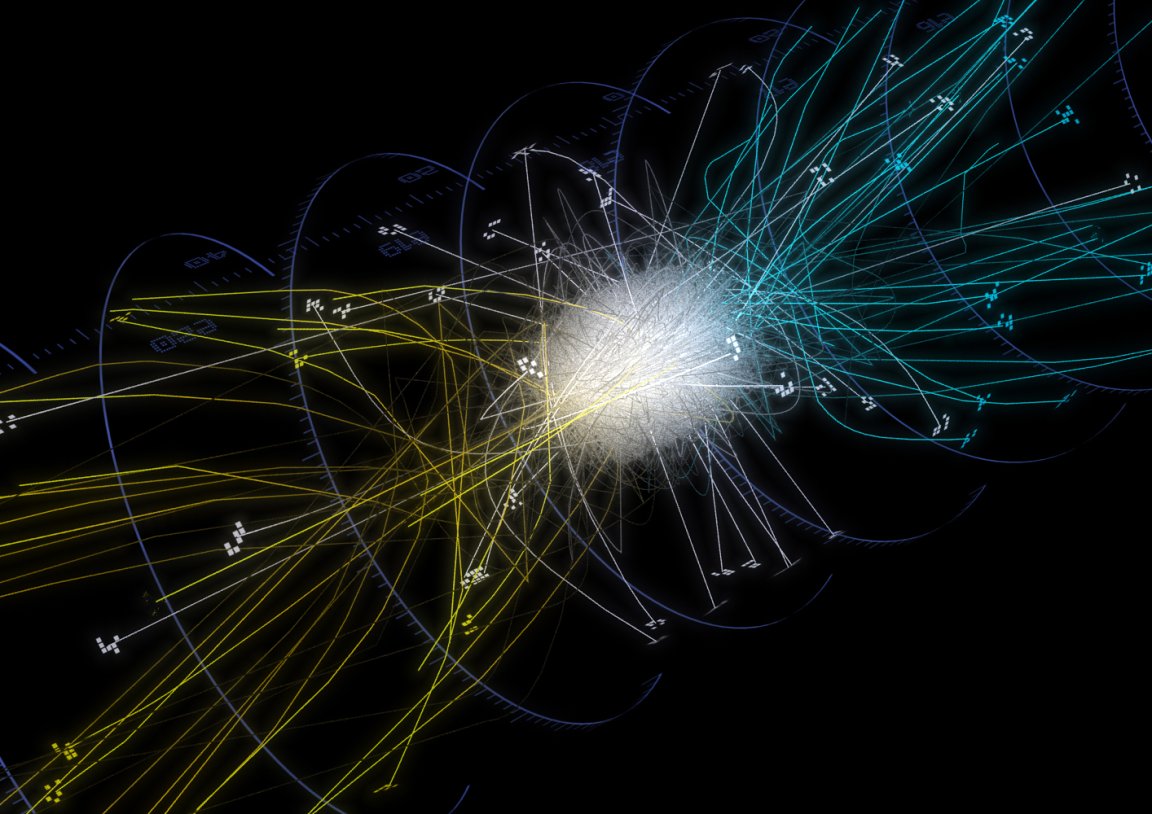
Observing Antihydrogen
Matter and antimatter are opposites. Although both are made up of atoms, the subatomic particles that comprise antimatter have the opposite electrical charges as their subatomic counterparts in matter. A regular atom has positively charged protons and negatively charged electrons in its nucleus. In contrast, an atom in antimatter has negatively charged antiprotons in place of protons, and positively charged positrons (which are really just anti-electrons) in place of electrons.
Since matter and antimatter must reflect each other as opposites, the spectral lines of antimatter atoms should reflect those of normal atoms exactly. This has been mere conjecture up until now, since physicists have not been able to observe antimatter spectral lines. However, the ALPHA collaboration at CERN has now replaced the proton and electron of a hydrogen atom with an antiproton and positron, respectively, creating antihydrogen.
The team detected the 1S-2S transition between positron energy levels using UV light in 2016, which reinforced the idea that matter and antimatter are symmetrical. Now, they have flipped the spin of the positron using microwaves. In other words, they have detected two distinct signatures from two transitions, which allowed the team to plot the first antimatter transition line shape and directly measure hyperfine splitting independent of a magnetic field.

“By studying the properties of anti-atoms we hope to learn more about the Universe in which we live,” co-lead author Professor Michael Hayden told Sci-News. “We can make antimatter in the lab, but it doesn’t seem to exist naturally except in minuscule quantities. Why is this? We simply don’t know. But perhaps antihydrogen can give us some clues.”
Unraveling Mysteries Of Physics
This discovery could help us answer some of the largest conundrums in physics today. Scientists know that matter and antimatter were created in about equal proportions after the Big Bang, as the universe cooled and expanded, but they can’t explain the asymmetry of matter and antimatter, or why antimatter, which annihilates anything it comes into contact with, didn’t just wipe out all matter.
“[W]e have yet to answer a central question of why didn’t matter and antimatter, which it is believed were created in equal amounts when the Big Bang started the Universe, mutually self-annihilate?” co-author Professor Mike Charlton said to Sci-News. “We also have yet to address why there is any matter left in the Universe at all. This conundrum is one of the central open questions in fundamental science, and one way to search for the answer is to bring the power of precision atomic physics to bear upon antimatter.”